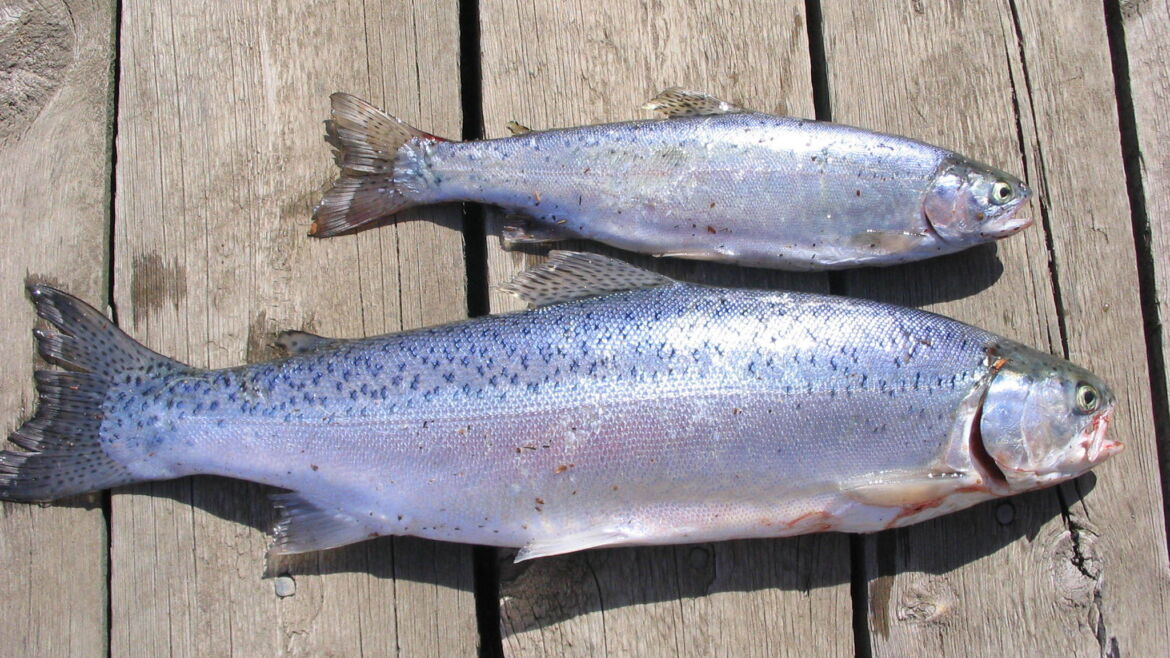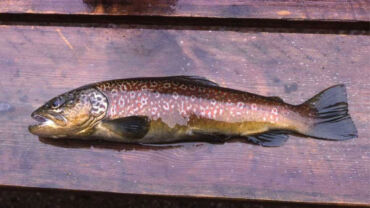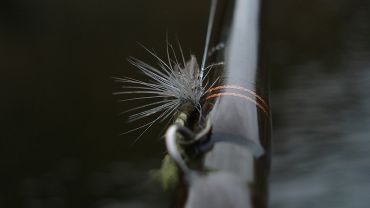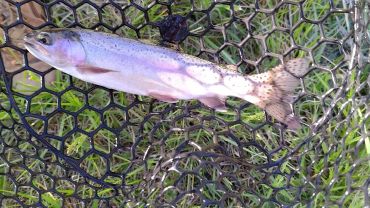Rainbow Trout are easily among the most accepted and cherished native and non-native species worldwide. From Europe to Australia and rivers and lakes across the United States, Rainbow Trout are accessible, fun to catch, look amazing, and taste great. In the following guide to catching Rainbow Trout, we’ll cover everything you need to know about this beautiful freshwater fish.
One of the great things about Rainbow Trout is how accessible they are to anglers. There’s a variety of locations worldwide, including the United States and Canada, where you have the opportunity to catch one of these freshwater fish. From experienced anglers to beginners, there’s an excellent opportunity to catch Trout in many of the streams, lakes, rivers, and reservoirs across North America.
While it will take a little bit of knowledge and learning, catching Rainbow Trout is reasonably easy, with many experts ranking them as accessible to beginners and experienced anglers alike. By changing how you target them, you can make it easier or more challenging for yourself. For example, bait fishing for Trout is reasonably easy and accessible, and on the other end of the scale, fly fishing is harder and requires more of an investment in both training, experience, and fishing gear.
With many fish and game departments in Canada and the United States actively stocking Rainbow Trout, there’s sure to be a local Trout destination close to you. In the following comprehensive guide to catching Rainbow Trout, we’ll cover:
If you’re just getting started in the world of Trout fishing, be sure to check out How to Fish for Trout in a River: Proven Tips and Techniques to help you learn the best methods for Trout fishing in rivers and streams.
Catching Rainbow Trout quickly becomes an addictive passion for most anglers who start to pursue these beautiful fish, but even an experienced angler can benefit from a little help every now and again, especially if you’re fishing in a new location. Thanks to the Fishbox App, a premium fishing app, you’ll have access to the advanced technology used by the Fishbox App, including the best time to go fishing and when you’re better off relaxing at home and getting your fishing tackle or boat ready for your next freshwater Trout fishing adventure.
Get your personalized fishing map
Answer a quick quiz and get your own personalized fishing map
Expert Opinion on How to Catch Rainbow Trout
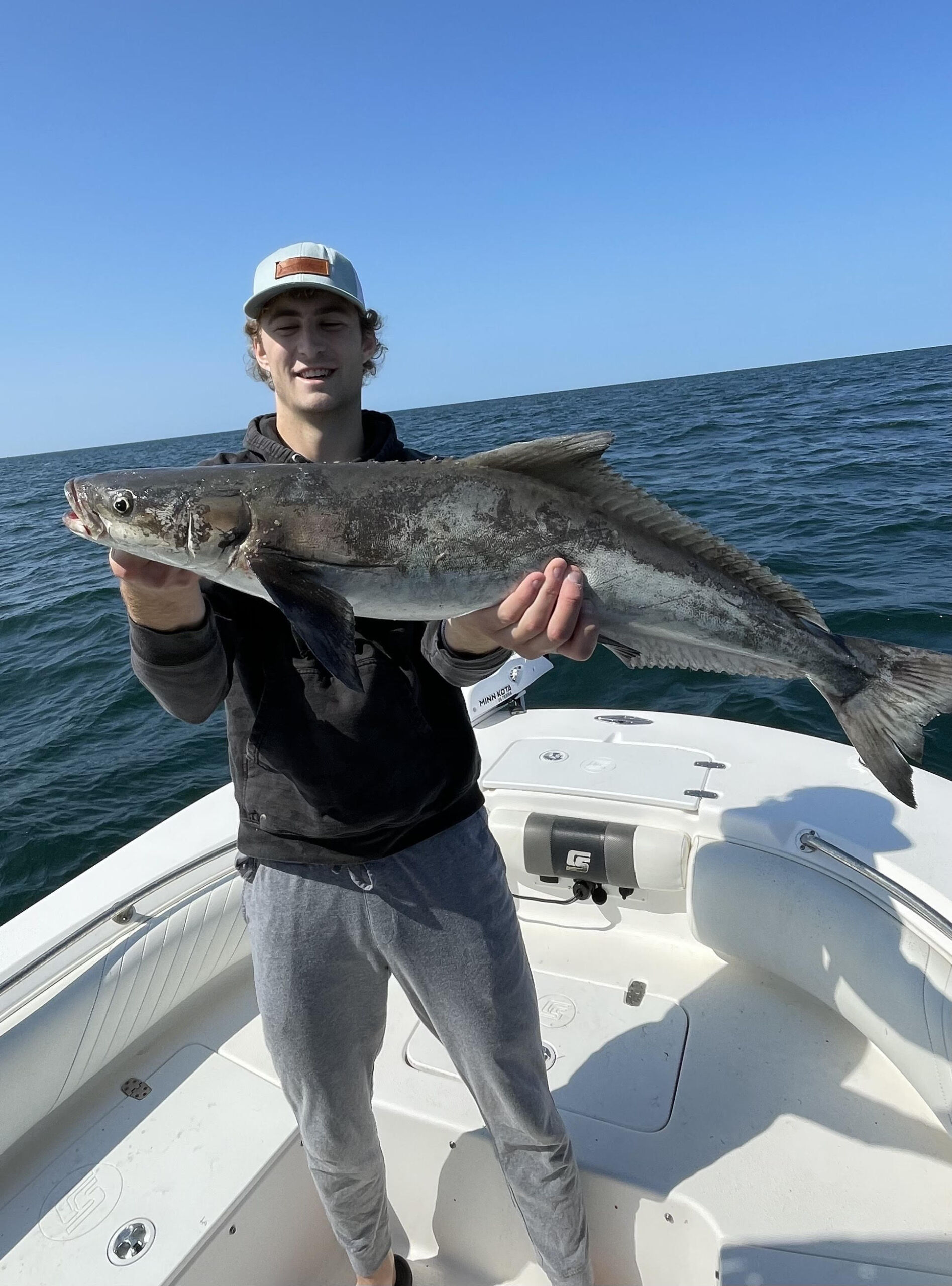
Pierce Latta
16 years fishing experience
“In my fishing career, I have caught plenty of rainbow trout, and they continue to keep me coming back to fish for them again. Something about duping a smart fish into biting a fly is so fun. The article starts with a brief introduction to the behavior of rainbow trout and describes how these trout are quite literally spread across the world.
In the following section, the author goes into detail about how seasons and weather affect the bite. Funny enough, the Fishbox App can already do this for you. It takes a variety of different metrics that affect the bite and spits out a percentage of the state of the bite that day. I would not overlook this app, given its tremendous upside.
One of the things that I picked up in this section was how the rainbow trout continues to feed even in the frigid mountain waters. This offers a great excuse to go fish in the mountains when the fishing for other species is not great in the colder months.
I actually love the section that follows talking about the inconsistent fight of rainbow trout. This is something that gets so overlooked I feel like. I can 100% relate to this section because, just like the article describes, I’ve had trout that have pretty much floated in and others that took upwards of 5 minutes to get in on fly gear.
This being said, your gear should reflect this because you should be prepared for a big fight. This perfectly segways into the next section, which talks about gear for rainbow trout.
I love how this section talks about the different gear for targeting rainbow trout because it can be broken down into two separate categories—fly fishing and regular fishing. Additionally, the article even recognizes the difficulty of fly fishing, which is sometimes overlooked. As someone who strictly fly fishes for rainbow trout, I can absolutely attest to its difficulty.
Your fly presentation for rainbow trout has to be almost perfect in order to elicit a strike. Not at all to say that spin fishing for rainbow trout isn’t hard, but fly fishing gives very little room for error.
In the section that follows, the author goes into some of the more popular techniques for rainbow trout fishing. Some of these mentioned include trolling, bait fishing, artificials, and fly fishing.
As I was reading through this article, one of the points that stuck out to me was the point about using wet hands to handle these fish. I love it when people take the time to acknowledge the needs of the fish in order to keep them and their stocks healthy.
I can personally attest to the importance of this because if we, as anglers, don’t take care of the waters the Lord has blessed us with, then fish stocks and, thus, fishing will suffer.
Additionally, I loved the point about fishing the bottom for trout. Too often, I think we forget that rainbow trout actually feed on bugs on the bottom. This being said, we should try to replicate this in our approach and fish the bottom.
I hope you guys have enjoyed reading this article and these comments and as always, good luck and tight lines.”
Visit his Instagram profile.
Subscribe to his YouTube channel.
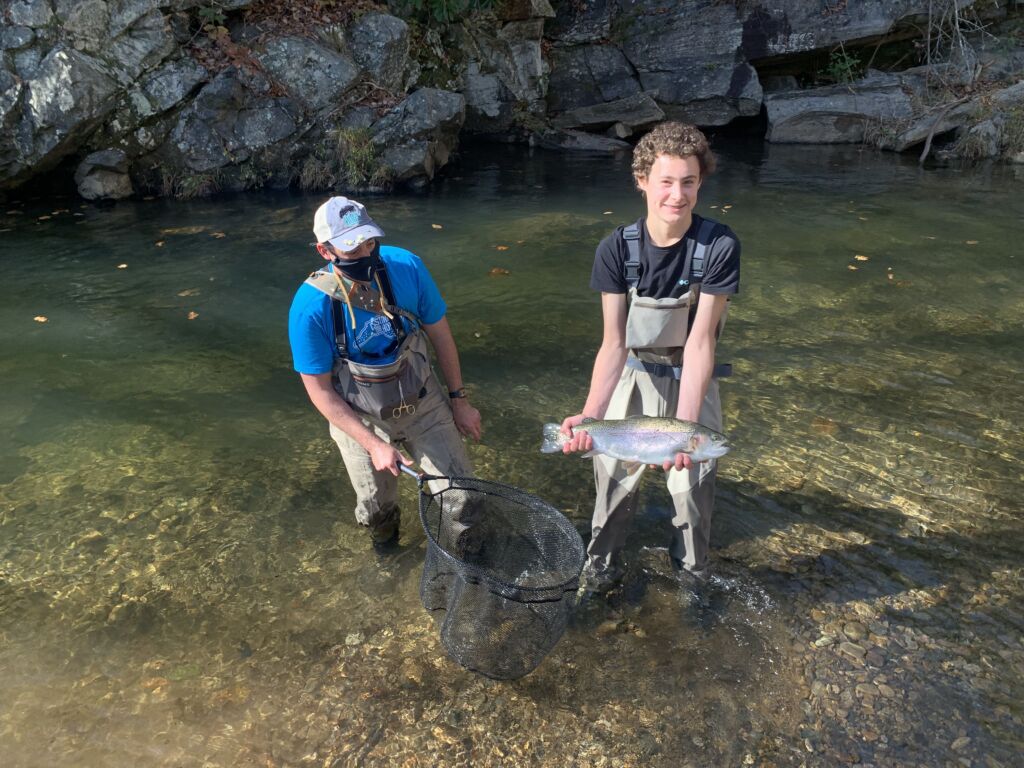
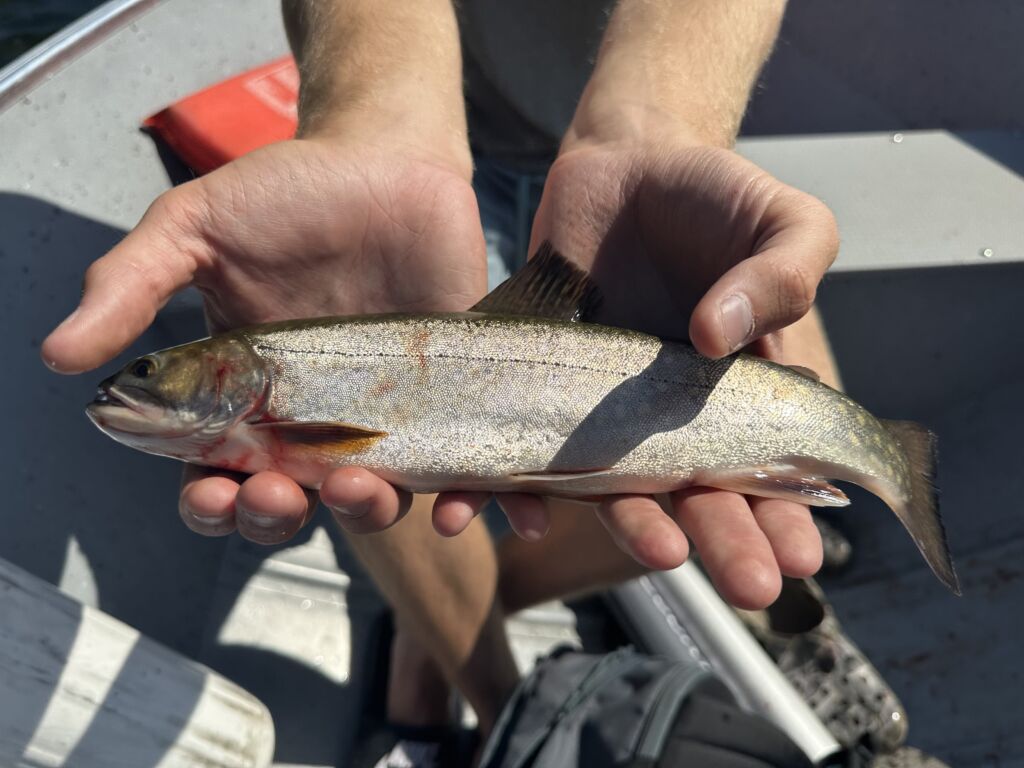
Understanding Rainbow Trout
Rainbow Trout has an interesting history when it comes to where they come from and where they’ve ended up. Native to the Pacific Ocean region, with origins in the rivers and lakes of Russia, Asia, and North America, they have now made their way across multiple continents with various strains developing along the way.
As impressive as their native range is, Rainbow Trout have been established in hundreds of bodies of water they never naturally occurred in. Some of these waterways have now become the world’s most sought-after Rainbow Trout fishing destinations.
Seasonal and Weather Effects On Rainbow Trout
Like a lot of Trout, Rainbow Trout are very sensitive to temperature and temperature changes. They need cold and clear water with stable levels of oxygen. Locations such as cold lakes, streams, and rivers where the temperature is consistently below 70 degrees Fahrenheit make ideal bodies of water for Trout. Even if the water temperature drops below 60 or 50 degrees, they’re still going to be reasonably comfortable.
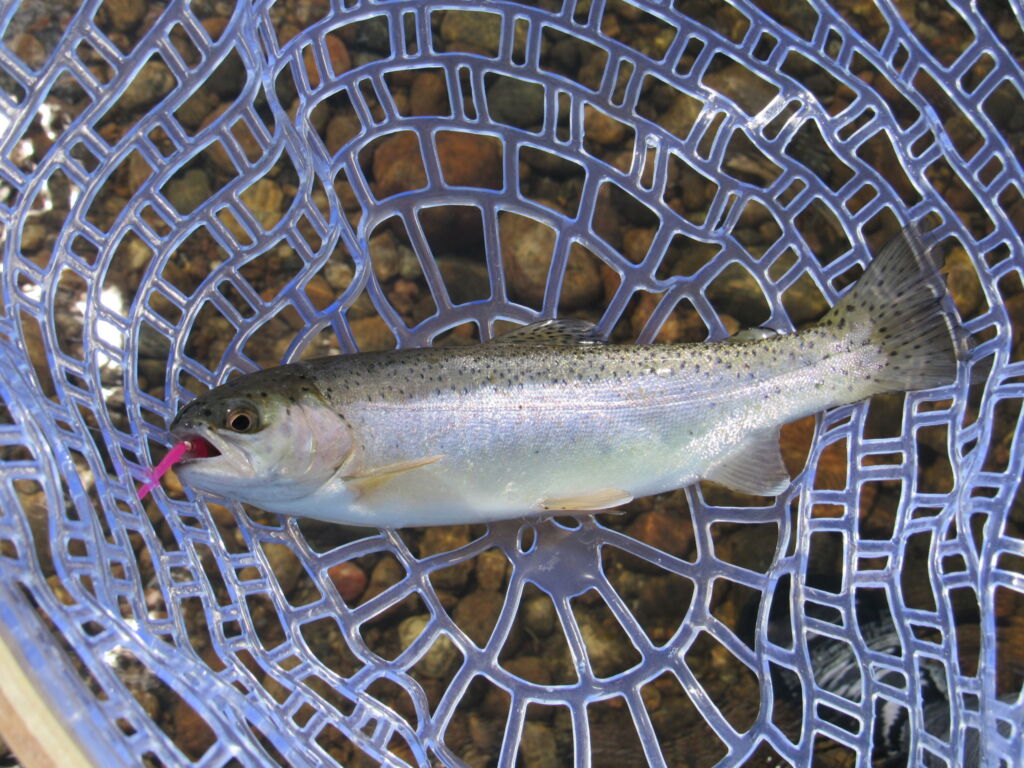
Like most fish, Trout also require a reliable food source. For Rainbow Trout, this is small insects, bugs, crayfish, and minnows, and where they compete with Salmon fish eggs.
Although in the coldest depths of winter, they’re going to be less active, Rainbow Trout are still feeding. Summer is their most active season, along with spring and fall when the temperatures are less prone to fluctuating.
Inconsistent Fight
It’s not unusual to catch two Rainbow Trout the same size, from the same body of water, on the same fishing tackle, only to have two completely different experiences. One might fight like the devil, jumping, making long runs, and hitting every snag, while another might come straight to the boat.
Typically, Rainbow Trout will jump and leap, thrashing their head and attempting to throw the hook in the process. If you’re practicing catch and release using barbless hooks, this can present quite a fun challenge. Regardless of the fight, you never know what you get when you hook into a Rainbow Trout, and at the end of the day, catching it is the fun part.
Essential Gear for Rainbow Trout Fishing
Catching a Rainbow Trout can be as easy or as difficult as you want it to be. It’s why so many experienced anglers make chasing these beautiful fish a lifelong obsession.
For beginners, a simple rod and reel combo is all you need. Lightweight fishing tackle and line will be perfect for average-sized Rainbow Trout. As you get more experienced and a little more confident, you’ll find yourself downgrading to lighter gear to make the pursuit of these fish more challenging. A 6-8 lb. line will do nicely.
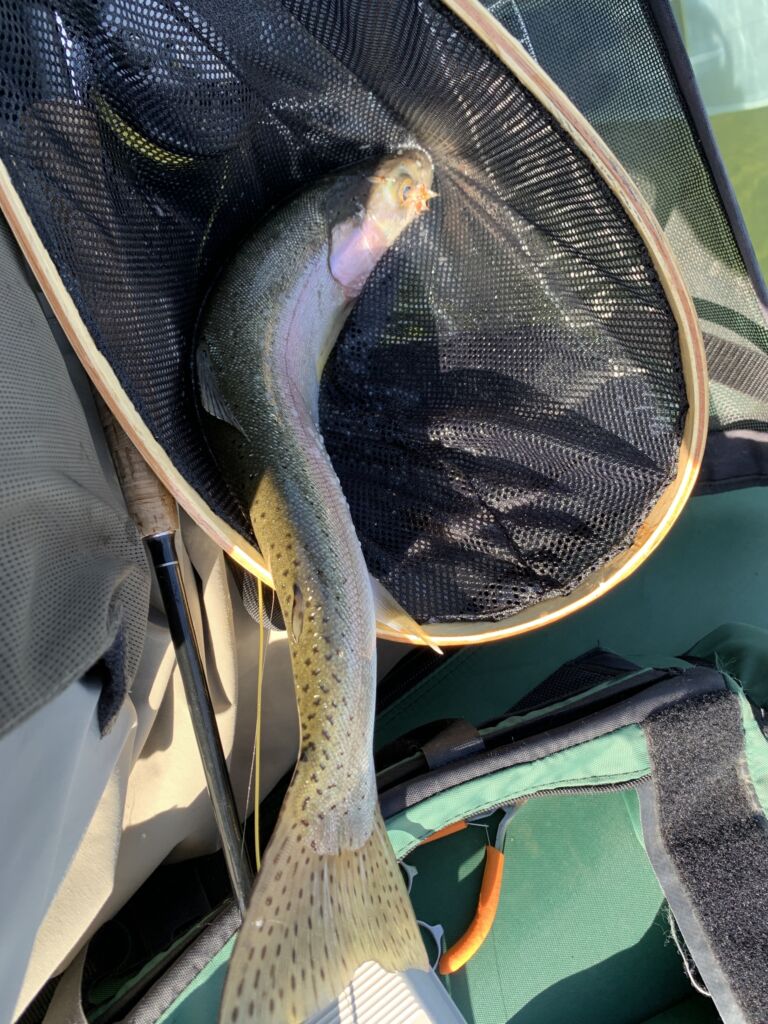
If you’re regularly fishing in fisheries with much larger Rainbow Trout, then you’ll need to upgrade your line, rod, reel, and tackle accordingly.
For experienced anglers who are sick of casting lures or prefer not to sit and relax while their bait does all the work, you really want to try fly fishing. Fly fishing takes catching Rainbow Trout and other freshwater species to the next level. It’s going to require a larger investment in fishing equipment and a little bit of practice, so make sure you’re committed before spending a lot of money.
Depending on where you’re fishing, there are typically strict seasonal, size, and bag limits in place. A lot of traditional Trout anglers practice catch and release, and carry equipment such as landing nets, fish grippers, and use barbless hooks or circle hooks in an attempt to inflict as little damage as possible on fish when released, which gives them the best chance of survival.
Read also: How to Catch Trout: Tips and Techniques for Successful Trout Fishing
Rainbow Trout Fishing Techniques
One of the joys of Trout fishing is that you’re not locked into anyone’s catch method. Regardless of your skill level or budget, you can generally get out onto the water and catch a Trout. Likewise, fishing in the same location can vary greatly from day to day, so you never know what’s going to work and what isn’t until you get out on the water.
Below, we’ll cover some of the most common and successful methods for catching Rainbow Trout regardless of where you’re fishing:
- Trolling – Trolling from a boat for Rainbow Trout is a tried-and-true method of catching them along with a variety of other freshwater fish. The key to successfully catching Rainbow Trout, or any fish for that matter, is trolling at the right depth and speed. A depth sounder or fish finder will help you locate where the fish are holding in the water, and then it’s just a matter of experimenting with different speeds and lures. However, trolling does require having access to a boat.
- Bait Fishing – Nothing beats sitting on the bank of a lake, river, or stream, relaxing, perhaps with a picnic and a good book and a line in the water waiting for a hungry Trout to take your bait. If you’ve got nowhere to be and nothing better to do, bait fishing for Trout is a great pastime, as it doesn’t require a lot of equipment. Be sure to check the regulations where you’re planning on fishing, as not all freshwater fisheries allow bait fishing. We’ll cover the best baits for Rainbow Trout in more detail in the next section.
- Spinning, Lures, Spoons, and Spinners – If you don’t have access to a boat and prefer something a little more active than bait fishing, spinning with a rod reel is a fun and exciting way to catch Rainbow Trout. There are a variety of different lures you can use, with soft plastics being a new addition to the casting mix. As you’ll be fishing from the shore, try casting toward a structure or along the bank rather than straight out into the river, as Trout likes to cruise the edges of banks and snags.
- Fly Fishing – Fly fishing requires a bigger investment in equipment and much more practice, but it’s possibly one of the best ways to sight fish for large Rainbow Trout. When you first show up at a new location, take some time to analyze what’s happening around you. Look for Trout rising to the surface and check out what flies, bugs, or insects the Trout may be feeding on.
Best Baits for Rainbow Trout
Our top picks for the best Rainbow Trout baits are:
- Powerbait.
- Worms.
- Nymphs and Minnows.
- Corn or Colored Marshmallows.
- Salmon Eggs.
If you’re lure fishing for Rainbow Trout:
- Springtime – Try weighted spinners at a low retrieval speed. Cast upstream and then maintain pace retrieving as it comes downstream.
- Fall – Any crankbaits that resemble minnows are effective.
Easily one of the most popular baits these days for Rainbow Trout are PowerBaits. It’s a scented dough-like substance that is available in a variety of colors and can be molded into different shapes and sizes.
If you’re more of a traditionalist, the classic worm, leech, or minnow will be your go-to bait of choice when it comes to landing big Rainbow Trout. For those who are fishing in rivers and streams, particularly during the Salmon spawn, a single salmon egg suspended under a float and then drifting down the current can be deadly.
Tips for Catching Rainbow Trout
Below are some quick Trout fishing trips that could turn your next Rainbow Trout fishing trip from a miserable failure to a massive success:
- Wet Hands Before Handling – If you’re planning on releasing your Trout after you catch them, handle them as little as possible, lift them carefully, and make sure that your hands are wet. Swimming your Trout before release for a few minutes or until they start to kick is also recommended.
- Fish the Bottom – Although Rainbow Trout likes to rise to the surface, over 90% of their time is spent on the bottom, so it’s no use fishing where the fish aren’t.
- Trout Are Territorial – Big fish tend to hang out on their own, so chances are high that if you’re catching a lot of small fish in one area, there won’t be any big fish in the same area.
- Don’t Forget Crawfish and Crustaceans – Crawfish are one of the most overlooked baits for Trout, but also one of the things they love to eat most, so don’t overlook crustaceans as an option, especially for larger Rainbow Trout.
- Light Tackle Can Be Fun – If you’re starting to get more experienced with Trout and looking to take it up a level and add a little more of a challenge, try downgrading your line to a lighter line and use barbless hooks. If you’re not planning on keeping the fish, or you’re fishing in a catch-and-release fishery, barbless hooks make releasing the fish unharmed much easier.
- High Water – When the water is high, focus on areas closer to the bank or around structures where Trout assemble out of the current, waiting for their food to come to them.
- Clear Water – Trout can be spooked easily, so if you’re fishing clear water or areas where you can’t approach the bank as easily, always be as quiet and unobtrusive as possible.
Seasonal Fishing Strategies
One of the biggest advantages you have when targeting Rainbow Trout is that you really can fish for them year-round, depending on the local regulations. Sure, some seasons and times are better than others, but from winter to summer, there’s a Trout waiting for you in your local river, stream, lake, or reservoir.
A limiting factor for some waterways is hatchery stocking. Many closed waterways, such as dams, reservoirs, and lakes, are stocked with hatchery fish. Because many waterways don’t allow Trout to breed naturally, and state agencies don’t want Trout to breed and spread, fish are stocked. This means that there are times when the fishery is closed for restocking or fish stocks are low, which makes catching them more difficult.
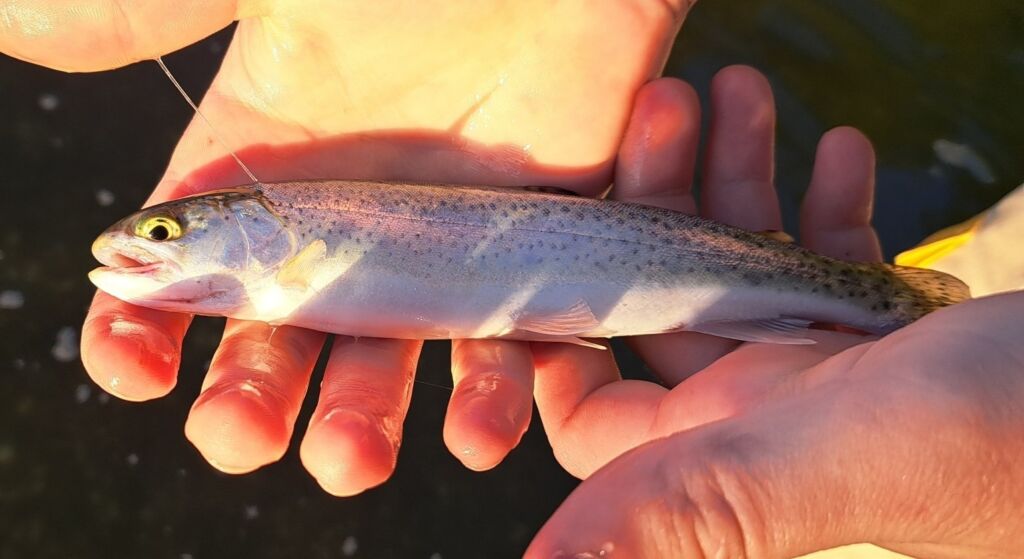
When you fish, it really comes down to when the Trout season in your local area is open and your own personal preferences. For example, if you love ice fishing, there’s nothing stopping you from going out in the middle of winter and fishing through the ice for Rainbow Trout. Likewise, if you love bait fishing in the sunshine, you can head out on a warm day and relax on the bank with a good book while you wait.
Most experienced Trout anglers you talk with will agree that fall to winter is the best time to catch Trout as they prefer cooler, more consistent temperatures.
Lake turnover also plays a significant role in when the fish will bite if you’re exclusively fishing for Rainbow Trout in a lake. Lakes typically turn over twice a year, and water from the bottom is swapped with water from the top. As Rainbow Trout spend almost 90% of their time at the bottom, they’ll be less active until the oxygen levels return to normal.
- Spring Turnover – Surface temperatures increase while the bottom stays cool. Fish activity will be much better the deeper you fish.
- Summer Stagnation – While warm water won’t sink, the oxygen levels of the water at the bottom are lower, which means Trout will spend a lot of time at the thermocline layer between the top and bottom, where the oxygen levels are more consistent.
- Fall Turnover – The water temperature at the top will start to cool down until it matches the bottom. Fishing closer to the surface during this period will be more productive.
- Winter – Focus on the surface. If you’re fishing through the ice, focus a lot on the areas just a few feet below the surface.
Common Mistakes and How to Avoid Them
Below are some common Trout fishing mistakes to avoid if you want to increase your chances of catching Rainbow Trout:
- Regulations and Licenses – Before you cast a line, even before you leave to go fishing, double-check that you’re fishing somewhere that you’re allowed to fish, Rainbow Trout are in seasons, and you have the correct license, permit, or endorsement on your fishing license.
- Match the Hatch – If you’re fishing in a new area, stop by the local tackle store and ask them for their opinion on lures or baits. If there isn’t a tackle store, take some time when you first arrive and watch the water and area around where you are planning on fishing. Did you see certain insects or bugs? Was there small fish or minnows, and if so, what type? Match the hatch and fish with lures or baits that fish in your area are used to eating.
- Fish Where the Fish Are – It’s no use fishing where the fish aren’t. Take a look around the area and start with the most promising regions first. If you don’t do well in one area, after a little while, switch to a new location.
Read also: Do You Need a Fishing License? A Comprehensive Guide
How to Catch Rainbow Trout – A Comprehensive Guide | Conclusion
Now that you know more about understanding Rainbow Trout, the fishing gear you’ll need, best fishing techniques, baits, and lures, along with seasonal tips and tricks for landing monster Rainbow Trout, you’ll be in a much better position to head out to your local lake, river, or stream and chase these beautiful looking fish.
Before you hit the water looking for Rainbow Trout, it’s essential that you check in with your local fish and wildlife department to ensure that you have the correct fishing license and permit for Trout fishing. By following fishing regulations, including size limits, bag limits, and season limits, along with only taking the fish we intend to keep, we can all ensure that future generations get to enjoy the same, if not better, Trout fishing opportunities for many years to come.
Regardless of where you’re planning on going, Rainbow Trout Fishing, the premium fish forecasting application Fishbox App, will put you in the perfect position to potentially land some great fish. Fishbox App analyzes weather and water conditions and input from local anglers to give you accurate and up-to-date forecasts.
Get your personalized fishing map
Answer a quick quiz and get your own personalized fishing map
Have you got a favorite bait, rig, or technique you love to use when going Rainbow Trout fishing that we didn’t talk about above? Drop a comment below! We’d love to hear your feedback, and your Rainbow Trout fishing tips could help a new angler land their first Rainbow Trout.
